
DIY Natural Toothpaste & Tooth Powder – Featuring Pearl Powder
A clean, effective way to care for your teeth, without
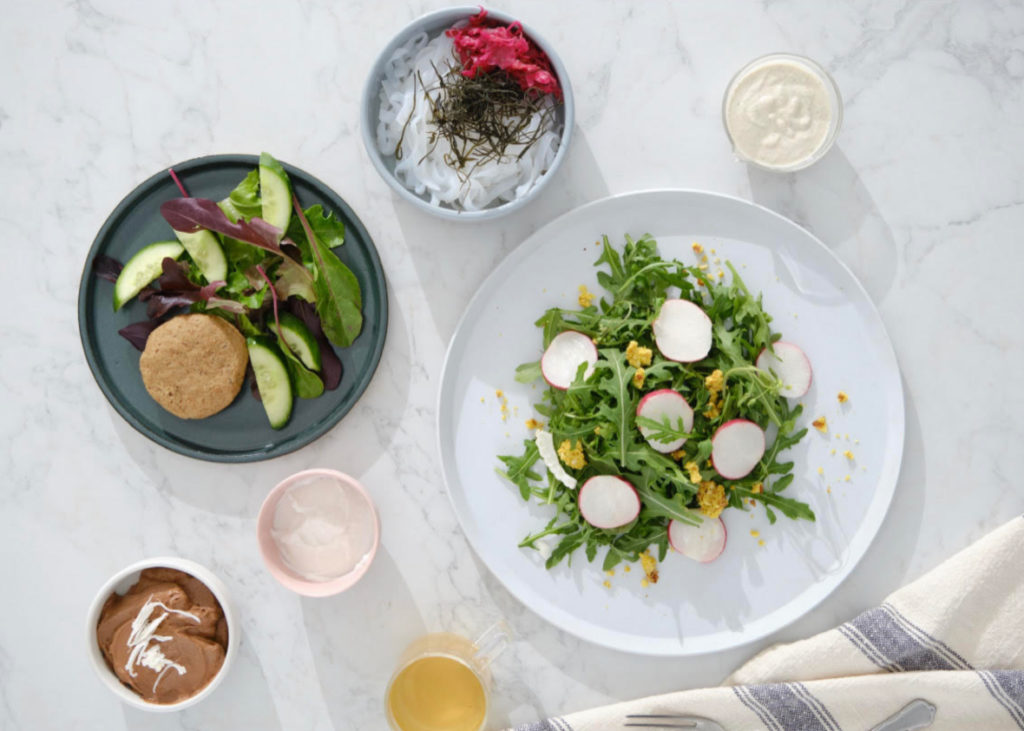
Kick-start, energise, rejuvenate
All carefully planned and prepared to help nourish, reset and rejuvenate the body and mind.
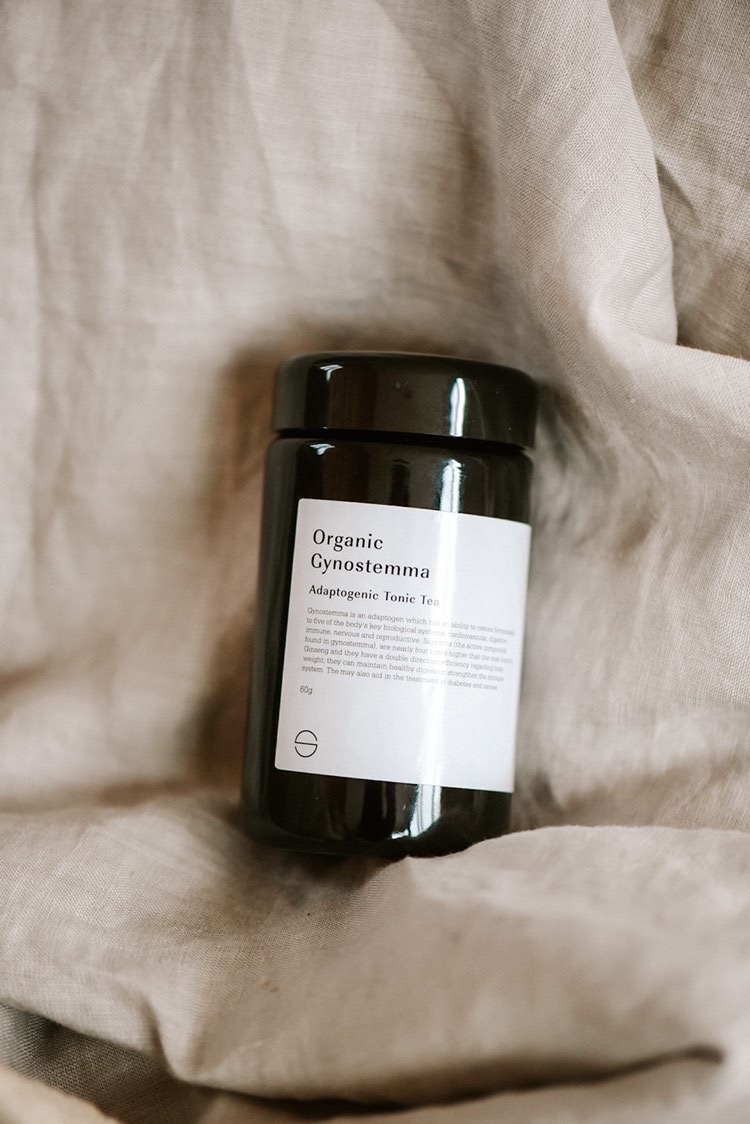

We all want to restore and maintain our health and well-being. Even though I have no hestitation for taking the most difficult tasting herbs if it works its always a bonus when you find a herb that tastes great as well as its benefits.
Gynostemma is that herb which can have the greatest overall impact on your health and tastes pretty delicious.
WHAT IS GYNOSTEMMA/JIAOGULAN
Gynostemma, also known as Jiaogulan, is praised as “the herb of Immortality”. It is a climbing vine of the cucumber /gourd family. It is said to “have the most wide ranging benefits for human health and wellness of any plant yet discovered” (Dr.Jialiu Liu)
The oldest documented history of Jialgulan goes back to the Ming Dynasty (1368-1644) when it was harvested wild for food. A reknowed herbalist, Li Shi-Zhen has included this herb in his classical book Compendium of Materia Medica, describing its use for hematuria, edema and pain of the pharynx, heat and edema of the neck, tumours and trauma in 1578AD.
People in the provinces of Guizhou, Guangxi, and Sichuan in the mountains of south central China have been using jiaogulan (called xiancao by locals) as a general health tonic and rejuvenating elixier. It was largely unknown outside of these mountainous regions until the early 1970s.
A 1970s census in China showed a high percentage of centenarians, with low incidences of diseases that usually afflict the ageing, in these regions. This started a research on jiaogulan’s possible anti ageing properties by the Chinese government.
In 1972, The first study was conducted evaluating the therapeutic effects of the herb on 537 cases of chronic tracheo-bronchitis by the Research Group of Combined Traditional Chinese-Western Medicine of Qu Jing. Since then over 300 scientific papers have been published, and Gynostemma pentaphyllum has been included in the Dictionary of Chinese Materia Medica.
It was discovered by Japanese when they were researching on plants that could be used as sugar substitutes. In 1977-78 Dr Masahiro Nagai discovered the saponins similar to those in ginseng, which were named gypenosides in Amachazuru, Japanese name for Jiaogulan. Over the next 10 years, another Japanese researcher, Dr Takemoto, along with his research group, identified 82 saponins in Amachazuru. Since then, 174 different gypenosides, 9 of which are also found in Panax, have been identified in Gynostemma pentaphyllum.
Jiaogulan’s health benefits are mostly due to these saponins. They give the adaptogenic and antioxidant properties as well as its ability to regulate Nitric Oxide production in the body.
The TCM qualities of jiaogulan are described as sweet, slightly bitter, neutral, warm, enhancing “yin” and supporting “yang,” and would be used to increase resistance to infection and to reduce inflammation.
ADAPTOGEN
If you are a regular reader here and fan of tonic herbs you will know how amazing adaptogens are. Let’s recap what they are.
Adaptogens are plants that can increase the body’s ability to adapt to physical, chemical, emotional, biological and environmental stressors. They do this by raising nonspecific resistance towards these stresses. Adaptogens support normal metabolism, immune, nervous and endocrine systems. They are intelligent herbs that can maintain body’s homeostasis.
For a plant to be qualified as an adaptogen it must meet these criteria.
Most of the time these adaptogenic qualities come from particular class of chemical compounds called triterpenoid saponins.
Gynostemma is often compared with Ginseng because nine of Gynostemma’s saponins are identical to those of Panax Ginseng. While Panax ginseng contains up to 28 saponins gynostemma is shown to contain at least 174 (in 2015). In fact Gynostemma has the widest spectrum of saponins of any known plant in the world by far.
Also high quality Ginseng can be more challenging to source and often not tolerated if the right variety was not chosen according to your individual constitution.
ANTI-OXIDANT
Jiaolugan is known to stimulate the body’s own production of both SOD and glutathione.
We are aware that having foods that are high in anti-oxidants is important. Eating whole fruits, vegetables and other plant foods that are rich in networks of antioxidants can protect us from many diseases and premature ageing.
Another way to ensure our body is equipped to defend against free radicals is having endogenous antioxidants. – SOD (Superoxide dismutate), Glutathione peroxidase, Catalase, ALA (Alpha Lipoic Acid) and CoQ10. They are the anti-oxidants produced by our own body and said to be more potent than dietary antioxidants.
Superoxide radicals are associated with the development of many degenerative diseases, including atherosclerosis, stroke, heart attack, neurological disorders, chronic and acute inflammatory conditions, chronic pain associated with inflammation, neurological disorders like Alzheimer’s and Parkinson’s, lung pathologies, and various other age-related disorders. * . ** , ***, ****
Glutathione is another vitally important endogenous antioxidant. It is produced within our cells. It neutralises free radicals and maintain dietary antioxidants in their active form to keep fighting free radicals. It is also a part of detoxifying process by binding pesticides, heavy metals and other toxins before excreting it out of the body. It also regulates protein and DNA synthesis and cell growth as well as maintaining a strong immune system. It is an important anti-oxidant that decreases muscle damage, recovery time and increases strength.
Jiaogulan has an ability to stimulate the body’s own production of both SOD and Glutathione.
Liu, Jialiu, et al. Effects of gypenosides-containing tonics on the serum SOD activity and MDA content in middle aged persons. Journal of Guiyang Medical College. 1994.
“Dr. Liu, the world’s foremost expert on Jiaogulan, gave gypenosides (the active ingredient in Jiaogulan) to 610 healthy patients ages 50 to 90. They received the gypenosides for one month. Those patients between 70 and 90 years of age averaged a decrease in harmful oxidants of 21.4% and an average increase in the internally produced anti-oxidant SOD of 282.8%. Those patients in the age group 50 to 69 had a decrease in harmful oxidants averaging 15.6% and SOD increases of 116.1%. A control group did not experience any change thus suggesting the effects were due to the gypenosides.”
NITRIC OXIDE
Nitric Oxide production affects many different physical functions, including cardiovascular, immune, nervous, reproductive system. One thing to note that Nitric Oxide concentration that is too high or too low can lead to problems. It is about having an optimal level of the compound and gynostemma has a regulatory effect to maintain a healthy balance. *
CARDIOVASCULAR HEALTH
When plaque builds up in the walls of arteries it can damage the lining of endothelium over time. This can be caused by high blood pressure, free radicals and other lifestyle factors.
Low production of NO can lead to high blood pressure and more plaque formation, which can further decrease the NO production. When the arteries get damaged they become stiffer and sticker attracting cholesterol and other cells. They may lead to more build up which makes it difficult for the blood to flow and possible formation of blood clots.
Gynostemma can prevent the damage to the arteries by the production of powerful antioxidants as well as to regulate blood pressure.
This study shows that Patience with high blood pressure showed that Jiaogulan is almost as effective as Indapamide (a high blood pressure drug), and almost twice as effective as Panax Ginseng (82%, 93%, and 46% respectively) in reducing high blood pressure. (Lu, GH. et al. Comparative study on anti-hypertensive effect of Gypenosides, Ginseng and Indapamide in patients with essential hypertension. Guizhou Medical Journal 1996; 20:1.)
Another factor to arterial plaque is accumulation of bad cholesterol (LDL) and triglyceride. Jiaogulan has shown in many studies that it can lower the level of LDL as well as triglyceride while raising good cholesterol (HDL) levels. It is probably due to the ability to modulate NO production.
IMMUNE HEALTH/CANCER
Immune System is affected by many factors.
Gynostemma has demonstrated strong anti-viral, anti-bacterial and anti-fungal properties, including Yellow Fever and Polio as well as anti-retroviral potential against the HIV-1 retrovirus, which is reported to cause AIDS.
Its beneficial effects on the immune system are mostly due to its antioxidant properties, which regulates the functional activity, growth and death of many immune and inflammatory cells. Because Jiogulan has dual directional effects on the immune system it can reduce it if overactive which can create inflammation, auto-immne conditions, rheumatoid arthritis, hay fever, allergies and some forms of cancers.
Gynostemma can also be protective from physical and emotional stresses which can lead to immune imbalance.
This herb also fights inflammation by decreasing free radical damage and inhibiting Nuclear Factor-kappaB (NF-kB) – a protein involved in cell survival and signalling – both important factors in the generation of inflammation. https://pubmed.ncbi.nlm.nih.gov/30119182/
Even though we cannot recommend gynostemma or any other herbs as only treatment for cancer many studies have shown gynostemma to have anti-cancer properties and ability to assist the healing.
Studies showing the reduction on tumour size, growth and metastasis (spreading), apoptosis (tumour cell death) by increasing free-radical damage to cancer cells, and inhibit energy production in cancer cells.
Gynostemma is also shown to be beneficial when taken along with chemotherapy and radiation therapy, providing a protection against the damage on the immune system, as well as reducing drug toxicity.
http://en.cnki.com.cn/Article_en/CJFDTOTAL-SHYK505.010.htm
http://en.cnki.com.cn/Article_en/CJFDTOTAL-ZGZX602.025.htm
Liu, et al. Therapeutic effect of jiaogulan on leukopenia due to irradiation and chemotherapy. Zhong Guo yi Yao Xue Bao (Chinese); 1992; 7(2): 99.
Hou, J., et al. “Effects of gynostemma pentaphyllum makino on the immunological function of cancer patients.” Journal of traditional Chinese Medicine, Academy of Traditional Chinese Medicine 11.1 (1991): 47-52.
LONGEVITY
As we learnt in the introduction, gynostemma was first discovered as a longevity plant. It has a rejuvenating and healing effect on all organs and major systems.
There are many studies showing the reduction of general signs and symptoms of ageing, such as fatigue, lack of energy, aversion to cold, diarrhoea, poor memory, decreased balance, insomnia, and excessive dreams. It is also found that the herb can increase the thickness of the skin, boosts synthesis of collagen, and protects elasticity, as well as a protection against UV.
NERVOUS SYSTEM
Two main ways that gynostemma shows its benefit on the nervous system is its powerful anti-oxidant properties and Nitric Oxide in the nervous system.
NO plays an important role in learning and memory by helping nerve cells in the brain to communicate with each other. High concentration of NO can become toxic and it has been linked to Alzheimer’s disease, Parkinson’s disease, multiple sclerosis (MS), amyotrophic lateral sclerosis (ALS), Huntington’s disease, and depression.
In addition, free radical damage has been shown to play a major role in the development of neurodegenerative diseases such as Alzheimer’s and Parkinson’s.
In both human and animal studies, Gynostemma was shown to improve brain functions like memory, concentration, and learning, especially with the elderly. A study shows it can significantly increase BDNF levels in the brain which is important for long term memory and neurogenesis.
It also helps protect against and recover from the damage caused by alcohol, free radicals as well as other chemicals including such as MSG.
It has been also used as a nootropic and brain enhancing drug for cognitive enhancement.
It has a restorative effect on the dopamine system, which can lead to enhanced motivation and drive. Gynostemma can also reduce anxiety and helps you feel calm by being an adaptogen and modulating levels of serotonin, dopamine and corticisterone.
Lastly, the herb was found to increase the excitability and stability of the brain during athletic competition. A Guiyang Medical College research group carried out testing on more than 300 professional athletes, including athletes of the China National Skating Team. All of the tested athletes reported that a Jiaogulan/Danshen recipe taken before the competition made them vigorous and alert, with quick reflexes and less nervousness. A control group taking Danshen alone did not feel increased stability and excitability of the nervous system during competition, although they also felt increased energy and endurance.
PHYSICAL PERFORMANCE
Gynostemma is known to increase athletic performance in several ways:
A clinical study at the Guiyang Medical College with 30 normal healthy persons and 220 athletes showed that within 30 minutes after oral administration of a single dose of Jiaogulan combined with other Chinese medicinal herbs, all subjects responded with increased cardiac output and stroke volume, while heart rate and blood pressure did not change.
Animal studies have confirmed this positive effect on heart function and have concluded that Jiaogulan’s effect is more potent than that of ginseng.
A number of studies involving forced swimming tests with animals have proven that Jiaogulan has a significant anti-fatigue effect and increases the endurance capacity in animals, enabling them to swim significantly longer before they get exhausted. In addition, these effects become stronger as the dose is increased.
Jiaogulan significantly increases glucose levels in the blood, liver and muscles, which is the fuel the muscles use and is therefore very important for the prolongation of endurance exercise.
Furthermore, Gynostemma decreases the amount of lactic acid (the build-up of which causes sore muscles the day after rigorous exercise) in the blood significantly and this is an important indicator for judging the degree of fatigue and means that Jiaogulan is able to postpone the appearance of fatigue and accelerate the recovery from fatigue
WEIGHT MANAGEMENT
Gynostemma can modulate weight by activating AMP-activated protein kinase (AMPK). Its ability to increase insulin sensitivity in the body also has beneficial weight-stabilising or weight-loss effects.
A 12-week, randomised, double blind, placebo-controlled clinical trial was done with 80 participants who were considered obese according to Asia-Pacific guidelines. 40 subjects were given an extract of one of Jiaogulan’s active ingredients and 40 were given placebo. The subjects made no changes to their lifestyle. Body weight in the Jiaogulan group dropped by 1.35kg, fat mass dropped by 1.25kg, and waist circumference dropped by 2.62 cm on average. None of these changes were observed in the placebo group.
A second randomised, single-blind, placebo-controlled clinical trial involving 56 subjects who were diagnosed with non-alcoholic fatty liver also found statistically significant effect of Jiaogulan extract on Body Mass Index (BMI), as well as improvements in other parameters over the placebo group.
Jiaogulan has also been reported to help those who are underweight to gain mass by improving metabolism and nutrient absorption.
INSULINE
Gynostemma can have a positive impact on the causes of diabetes – insuline resistance and insufficient insulin production.
Many studies show that gynostemma can lower blood sugar and glycosylated hemoglobin levels by significantly improving the cells’ insulin sensitivity. It may also increase insulin concentration in the blood both by stimulating the pancreas to produce more insulin and by improving sugar metabolism.
*,
WHY CHOOSE OUR GYNOSTEMMA
When it comes to supplements and herbal medicine quality is absolutely important. Gynostemma is my favourite herb and consume it pretty much every day. It is important for me to choose the potent and high quality gynostemma.
Watch how I made gynostemma matcha ice cream
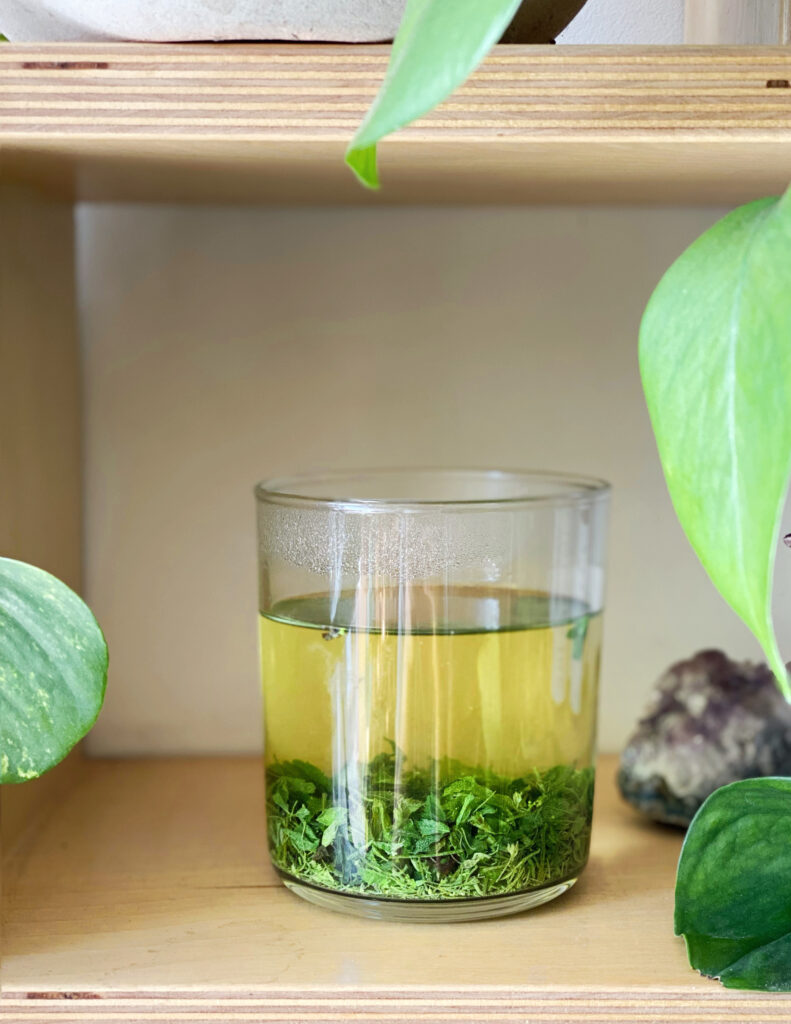

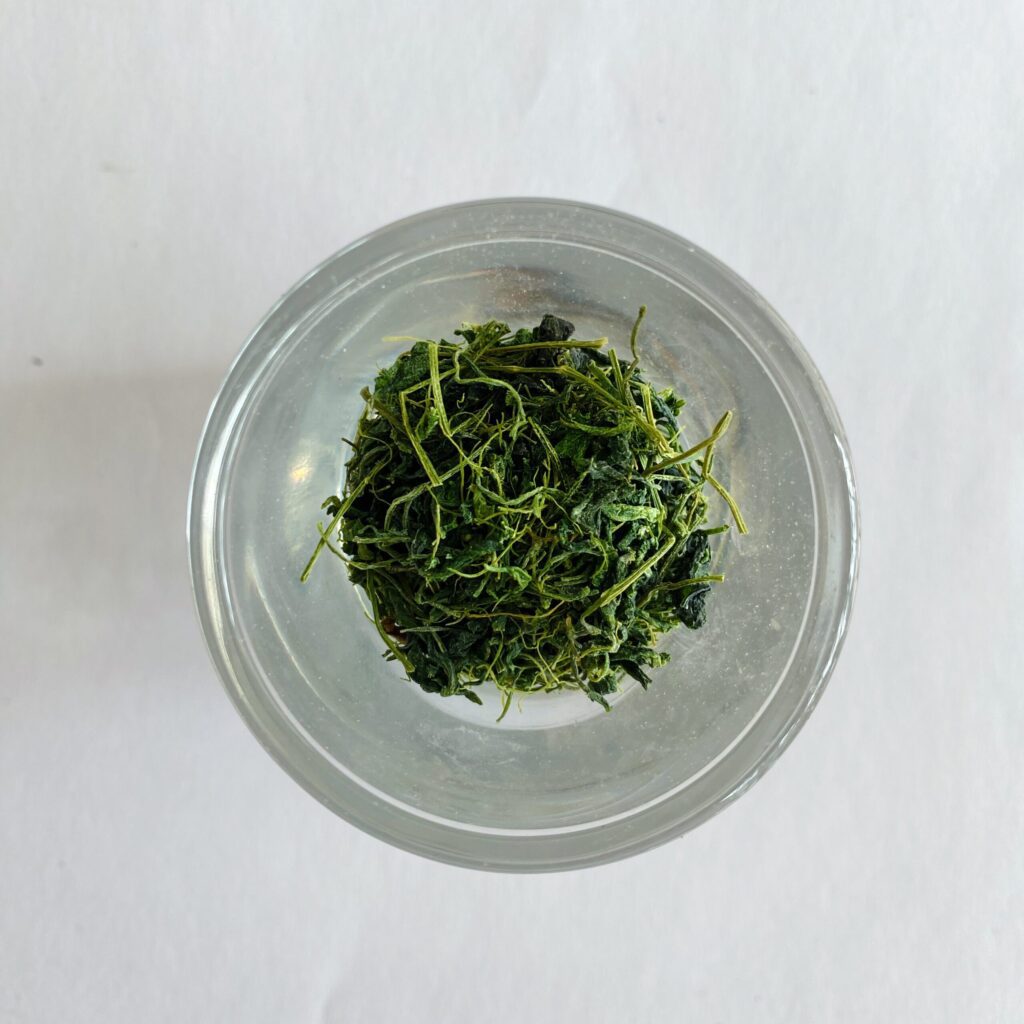
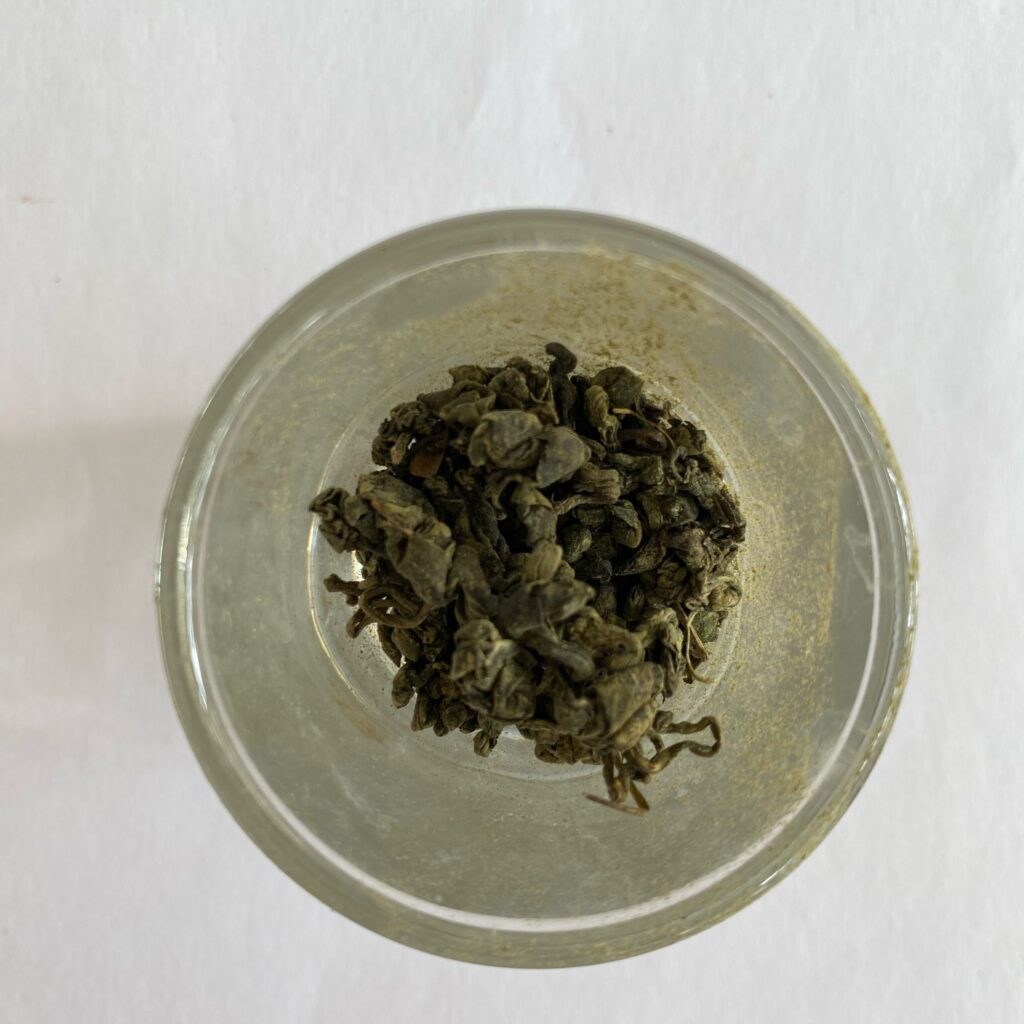

A clean, effective way to care for your teeth, without

In the world of tonic herbs and medicinal mushrooms, there’s

As the days grow shorter and the air becomes crisp,
Copyright Shoku Iku © 2024 | All Rights Reserved.
The statements on this website have not been evaluated by the TGA or FDA. These products are not intended to diagnose, treat, cure or prevent any disease.
Sign up to receive your discount.